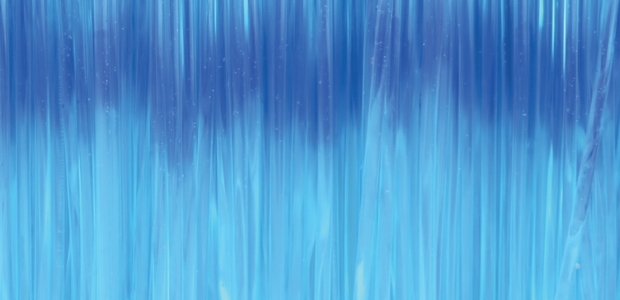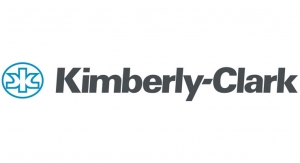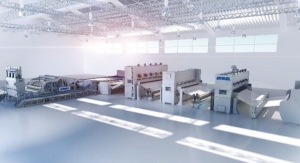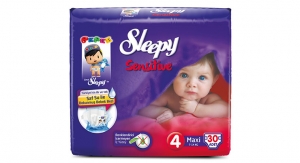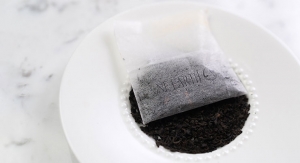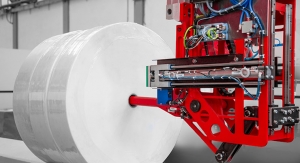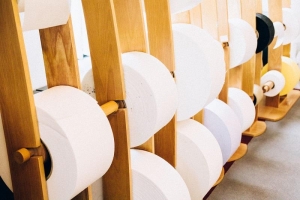Karen McIntyre, senior editor06.09.14
As the nonwovens market grows so does the amount of fibers and resins used to make them. Currently representing about 25% of total fiber shipments, the nonwovens industry continues to use a diverse range of fibers including oil-based ones like polypropylene and polyester and natural ones line cotton or cellulose.
“Nonwovens production continues to grow at a rate that is higher than the growth rates of the two other major consumers of staple fiber—traditional textile applications—and this is accounting for the growth in share of nonwovens-based products,” explains Paul Latten, of Basofil, who recently made a presentation about stable fibers at INDA’s Converting and Bonding conference last month.
Unfortunately, the range in fiber types makes it difficult to trace activity in the nonwovens market as one market’s increase might translate into another one’s decline. For instance, a few years ago cotton’s usage was boosted when an oversupply situation brought its prices lower. As the oversupply waned and prices increased, cotton became less attractive to nonwovens suppliers who instead chose rayon or polyester or polypropylene as their main ingredient.
“There is a different story for every fiber type and there is a different story for every region,” Latten says.
Representing a significant share of the nonwovens market, particularly hygiene, is polypropylene. This oil-based resin offers cost effectiveness, softness and high performance and is the raw material of choice for most spunbond and spunmelt manufacturers serving the diaper and other hygiene markets. Meanwhile, polyester, which is also an oil-based material, continues to find new uses in durable applications.
In fact, Latten reports the use of oil-based fibers’ share is growing everywhere as these fibers work well, are relatively inexpensive and are less volatile and price effective. The current range of this volatility is built into the cost structure and, shielding nonwovens producers from price swings.
Meanwhile, natural-based fibers like cotton and rayon have their attractive features in the nonwovens industry. Not only are their green profiles attractive to companies looking to focus on sustainability, they can offer absorbency, strength and other benefits consumers want, particularly in the wipes market.
In a nutshell, there is a spot for many fibers within nonwovens.
Cotton continues to please
According to Jan O’Regan, director of strategic initiatives at Cotton Incorporated, cotton has a surprisingly long history in the nonwovens industry. “Needlepunch felts used in furniture and bedding are not new, nor is cotton as a component in shoddy used in hood liner and trunk liner applications in the automotive industry,” she explains adding that these applications were neither trendy nor high tech and didn’t get much notice.
“Then came along the tremendous growth and proliferation of products in the wet wipe market and the development of spunlacing technology which has been well suited to these products and to cotton,” she says. “The advent of these two developments opened up doors for new product developments in which cotton contributed technical and performance advantages—absorbency and wet strength—plus marketing advantages. Consumers know and love cotton. Their point of reference is T-shirts, jeans, sheets and towels, which are desired as soft, comfortable and natural. Furthermore, cotton’s natural hypoallergenic properties make it a safe and healthy choice for all applications that come in contact with skin.”
There continues to be a steadily increasing interest in cotton fibers for use in the nonwovens industry due to marketing efforts made by Cotton Incorporated as well as the growers and marketers themselves. These efforts have been bolstered by successful research efforts by organizations such as the United States Department of Agriculture.
“Cotton Incorporated has led the way in highlighting the positive sustainability story for cotton as well as its unique and desirable performance features,” O’Regan adds. “The USDA’s work has addressed questions of mechanical processing and fiber and fabric properties as well as functional chemistries such as antimicrobials, flame retardants and medical technologies. These efforts have helped raise awareness in the minds of nonwoven industry leaders regarding how cotton can address their performance and marketing needs in their industry segments.”
The USDA’s pilot line in New Orleans has been a place for companies who don’t have small-scale nonwovens operations to experiment with new ideas for product development and problem solving. Recent efforts by USDA researchers have involved the use of quats to make cotton suitable for use in sanitizing wipes.
Of course, cotton’s movement into nonwovens has not come without its challenges. In the early days, carding and filtration hurdles presented processing challenges for running staple, cotton fiber but by and large, those have been overcome.
Pricing has been another challenge. While cotton’s global market price is competitive with synthetics, hygienically pure, bleached cotton, which is most often used, is consistently higher. Solutions to this challenge have varied. The range of cotton fiber options is broader today than ever, including clean, unbleached cotton fiber, linters and recycled cotton fibers. All are new, innovative and more affordable options. Blending with other, less expensive fibers has worked for some applications. Positioning new cotton products as safe, healthy choices for consumers with skin sensitivities is another strategy. The future will include even more possibilities.
Cotton grower TJ Beall has been making inroads in establishing new uses for its True Cotton brand of unbleached (greige) cotton, which offers cost advantages, a better sustainability profile, excellent fluid management and a host of medical benefits.
In January, TJ Beall announced it was partnering with Huntsman Textile Effects to treat True Cotton with Ultraphil CO, which is used in a variety of hydrophilic finishes for nonwoven materials where it offers distinct fluid management benefits to develop a cotton-based topsheet material for baby diapers. The exceptional functional and hydrophilic performance of this spunlaced topsheet includes immediate moisture management qualities and provides a gentle and soft feel against the skin.
True Cotton treated with Ultraphil CO outperformed polypropylene spunbond nonwovens in diaper topsheet applications in tests performed by Jim Hansen at Marketing Technology Services and diaper industry consultant Carlos Richer, according to Lawson Gary, COO of TJ Beall.
“The product really outperformed when it came to liquid strikethrough and showed better results in liquid acquisition,” he says. “We test topsheets made of 100% cotton and cotton synthetic blends.
Gary, whose company recently received an INDEX award for True Cotton, says he thinks the hygiene industry is poised for a change as he sees more and more interest in cotton. “Many of the cost and technical hurdles to utilizing this fiber in many of the carded nonwovens technologies have recently been addressed and I think the future of natural cotton fibers is a bright spot in our industry,” he says.
Strong history, bright future
George Hargrove, vice president of cotton maker Barnhardt Manufacturing credits cotton’s long history with consumers for its trusted role in nonwoven fabrics and especially products that come into contact with the skin. “Barnhardt’s role is and has been to provide purified cotton that is extremely white, free of bacteria and fungi for products ranging from tampons to swabs and medical devices and personal wipes. In the U.S., manufacturers processing unbleached cotton fibers are required to follow the OSHA cotton dust standards and guidelines. Due to its wet processing and purity OSHA has exempted bleached cotton fibers from these requirements,” he says.
Barnhardt’s latest innovations HyDri and HiLoft purified cotton are both finding their way into new nonwoven applications including topsheets for baby diapers, feminine napkins and adult incontinence products as well as the acquisition layers of these products. Purified and bleached cotton provides the comfort, breathability and aesthetics that consumers desire in these applications. “Cotton fibers provide comfort, breathability, biodegradable, safety, superior wet strength, quick liquid uptake (great wicking properties) and retention and a long history of safety,” Hargrove adds. “Studies also show that consumers prefer cotton over other fibers in these types of products.”
He adds that new fabrics targeted for the coverstock market have been developed using HyDri cotton. These fabrics allow fast strike through time while having low wet back, properties that are important for coverstock fabric applications. “HiLoft is cotton that has a significantly higher micronaire (denier) than most cotton, providing superior wicking and able to resist collapsing under pressure which yields more void space in the fabric structure and allows higher liquid holding capacity,” he says.
Lenzing grows in and out of wipes
Tencel’s growth, both within nonwovens applications and beyond, has spurred an aggressive expansion plan by its manufacturer. In early 2013, Lenzing announced it was building the most modern fiber production line in the world. Representing an investment of €130 million and 24 months, the new line will have a capacity of 64,000 tons and will be able to make specialty fibers like Lenzing Modal and Lenzing FR as well as Tencel.
Tencel represents the greatest technological innovation in the man-made cellulose fiber industry since the invention of the Viscose fiber around 100 years ago,” says Dieter Eichinger, vice president business unit textile fibers, Lenzing AG. “The developments of the last 20 years are just the beginning of a success story which will continue for many decades to come. Tencel uniquely answers the demands for competitive production costs relative to other fibers with the demands for sustainable production.”
Within the nonwovens industry, Tencel has been popular in wipes for several years, but recently the company was awarded for a new concept, Tencel skin.
At INDEX, the Tencel skin promotion campaign received the award for “most original marketing campaign for a product made from, or incorporating nonwovens.” Tencel Skin is specifically developed for use in facial masks and is already being used in products manufactured in Korea. The smooth fiber surface creates a silky feeling. The unique structure provides optimum absorbance and compatibility with lotion. The fiber is of botanic origin, since it is extracted from the raw material wood.
As it expands into new areas like the face mask, Tencel continues to offer opportunities in its core nonwoven-based market wipes. Just this spring, Lenzing highlighted the fiber’s biodegradability and its strength as well as its ability to be flushed.
“Flushable” wipes from Tencel stand out due to their high quality. Due to the enormous fiber strength, the Tencel wipe is particularly tear-resistant in contrast to the materials conventionally used such as pulp and short-cut viscose, according to the company. The high strength of the Tencel fiber also reduces the use of binding agents which are mostly made of acrylic, latex or bi-component fibers. Another advantage of Tencel compared to short-cut viscose is that due to the higher strength profile, fewer fibers are required for a comparable quality than in a wipe of short-cut viscose.
“Quality does not, however, only mean enhanced service properties but also refers to the skin-friendly attributes of Tencel. The fiber has already demonstrated in tests that it is particularly well suited to sensitive skin,” says Eichinger.
The exceptionally smooth surface of Tencel makes the fiber ideal for the skin and prevents skin irritations. For this reason, wipes made of Tencel are particularly smooth and gentle on the skin.
In fact, these features make Tencel ideal to be processed on new machines combining the attirbutes of paper making and hydroentangling, which are designed to produce flushable wipes, Eichinger adds.
Polyester continues to thrive
Offering perspective on polyester is Ricky Lane, trade relations and global communications for fiber supplier DAK Americas. DAK offers value added, differentiated polyester fibers for nonwovens as well as functional fibers such as hydrophilic fibers for markets such as wipes and bedding.
“DAK offers customized products for customers to meet their unique specifications,” he explains. “This ability to customize fiber offerings allows for DAK to partner with customers to improve production cost and functionality of their product offerings by matching fiber characteristics and specifications with special customer needs.”
With customers feeling the demands of competing in a global marketplace, they are looking for the opportunity to differentiate their offerings both in functionality and in value, Lane says. “Polyester offers an excellent cost/value relationship with unique cross sectional offerings, allowing for the optimization and balancing of the basis weights of products and product hand,” he adds. “In many cases, the same product hand can be achieved using less basis weight polyester through unique cross sectional offerings.”
Additionally, polyester allows for exceptional processability versus other fibers like offering greater strength in lightweight spunlace fabrics than viscose or polypropylene. Users also have the ability to engineer physical attributes into the fiber such as unique cross-sections that can offer several different benefits to the final product from product hand to basis weight to antimicrobial and hydrophilic properties.
Indorama invests in Turkey
Indorama Ventures Public Company Limited (IVL) has acquired 51% of polyester and PET producer SASA Polyester Sanayi (SASA) in Turkey through its wholly-owned subsidiary Indorama Netherlands B.V. (IBV) from Hacı Ömer Sabancı Holding (Sabancı Holding). SASA is a publicly listed company on the Borsa Istanbul and IBV will be conducting a mandatory tender offer for the remaining 49% of SASA’s share at Borsa Istanbul as per requirements of Turkish Capital Markets Legislation.
SASA incorporates integrated feedstock and polymer facilities producing DMT, staple fibers, filament yarns, PET, PBT polymers and specialty chemicals with a total plant capacity of 600,000 tons per annum. SASA supplies both Turkish and European markets with high quality, high value added products.
“SASA is an exciting addition to Indorama Ventures’ portfolio that allows us extended geographic expansion into a new and fast-expanding market and territory,” says Aloke Lohia, group CEO of Indorama Ventures. “The company is a well-known producer in the country and is an excellent first step into the Turkish market, allowing us to leverage its HVA production facilities to provide advantaged portfolio extensions for current and new customers. Turkey provides us the potential for expansion of domestic sales and opens up the opportunity to sell into the surrounding underserved region.
“The acquisition is in line with our three dimensional strategic plan to expand broadly into fast-growing underserved markets, horizontally into high value add (HVA) products to offer a deeper portfolio of products to our customers and vertically integrating into our feedstock as SASA has onsite feedstock,” Lohia says.
“SASA has a rich heritage of technology and expertise which will be complementary to Indorama Ventures since SASA is now serving over 54 countries with 150 different types of products. Moreover, Turkey’s unique geographical position straddling Europe, North Africa, Central Asia and Middle East offers the potential for faster growth in both the domestic and export markets to neighboring countries and Europe. Turkey’s textile sector is an important area of the economy and continues to grow, being a noted exporter to the key European market. We foresee this asset being the jewel in the crown of our expansion into the Turkish market and will be a good fit for our other expansion plans in the region.”
Established in 1966, SASA’s production facilities are located in the Adana region with excellent access to the country’s transportation infrastructure allowing the company to deliver to Europe, Middle East and North Africa.
Based in Thailand, Indorama Ventures has invested ambitiously in fiber production in recent years and is the owner of such brands as Wellman, Fibervisions and Trevira.
“Nonwovens production continues to grow at a rate that is higher than the growth rates of the two other major consumers of staple fiber—traditional textile applications—and this is accounting for the growth in share of nonwovens-based products,” explains Paul Latten, of Basofil, who recently made a presentation about stable fibers at INDA’s Converting and Bonding conference last month.
Unfortunately, the range in fiber types makes it difficult to trace activity in the nonwovens market as one market’s increase might translate into another one’s decline. For instance, a few years ago cotton’s usage was boosted when an oversupply situation brought its prices lower. As the oversupply waned and prices increased, cotton became less attractive to nonwovens suppliers who instead chose rayon or polyester or polypropylene as their main ingredient.
“There is a different story for every fiber type and there is a different story for every region,” Latten says.
Representing a significant share of the nonwovens market, particularly hygiene, is polypropylene. This oil-based resin offers cost effectiveness, softness and high performance and is the raw material of choice for most spunbond and spunmelt manufacturers serving the diaper and other hygiene markets. Meanwhile, polyester, which is also an oil-based material, continues to find new uses in durable applications.
In fact, Latten reports the use of oil-based fibers’ share is growing everywhere as these fibers work well, are relatively inexpensive and are less volatile and price effective. The current range of this volatility is built into the cost structure and, shielding nonwovens producers from price swings.
Meanwhile, natural-based fibers like cotton and rayon have their attractive features in the nonwovens industry. Not only are their green profiles attractive to companies looking to focus on sustainability, they can offer absorbency, strength and other benefits consumers want, particularly in the wipes market.
In a nutshell, there is a spot for many fibers within nonwovens.
Cotton continues to please
According to Jan O’Regan, director of strategic initiatives at Cotton Incorporated, cotton has a surprisingly long history in the nonwovens industry. “Needlepunch felts used in furniture and bedding are not new, nor is cotton as a component in shoddy used in hood liner and trunk liner applications in the automotive industry,” she explains adding that these applications were neither trendy nor high tech and didn’t get much notice.
“Then came along the tremendous growth and proliferation of products in the wet wipe market and the development of spunlacing technology which has been well suited to these products and to cotton,” she says. “The advent of these two developments opened up doors for new product developments in which cotton contributed technical and performance advantages—absorbency and wet strength—plus marketing advantages. Consumers know and love cotton. Their point of reference is T-shirts, jeans, sheets and towels, which are desired as soft, comfortable and natural. Furthermore, cotton’s natural hypoallergenic properties make it a safe and healthy choice for all applications that come in contact with skin.”
There continues to be a steadily increasing interest in cotton fibers for use in the nonwovens industry due to marketing efforts made by Cotton Incorporated as well as the growers and marketers themselves. These efforts have been bolstered by successful research efforts by organizations such as the United States Department of Agriculture.
“Cotton Incorporated has led the way in highlighting the positive sustainability story for cotton as well as its unique and desirable performance features,” O’Regan adds. “The USDA’s work has addressed questions of mechanical processing and fiber and fabric properties as well as functional chemistries such as antimicrobials, flame retardants and medical technologies. These efforts have helped raise awareness in the minds of nonwoven industry leaders regarding how cotton can address their performance and marketing needs in their industry segments.”
The USDA’s pilot line in New Orleans has been a place for companies who don’t have small-scale nonwovens operations to experiment with new ideas for product development and problem solving. Recent efforts by USDA researchers have involved the use of quats to make cotton suitable for use in sanitizing wipes.
Of course, cotton’s movement into nonwovens has not come without its challenges. In the early days, carding and filtration hurdles presented processing challenges for running staple, cotton fiber but by and large, those have been overcome.
Pricing has been another challenge. While cotton’s global market price is competitive with synthetics, hygienically pure, bleached cotton, which is most often used, is consistently higher. Solutions to this challenge have varied. The range of cotton fiber options is broader today than ever, including clean, unbleached cotton fiber, linters and recycled cotton fibers. All are new, innovative and more affordable options. Blending with other, less expensive fibers has worked for some applications. Positioning new cotton products as safe, healthy choices for consumers with skin sensitivities is another strategy. The future will include even more possibilities.
Cotton grower TJ Beall has been making inroads in establishing new uses for its True Cotton brand of unbleached (greige) cotton, which offers cost advantages, a better sustainability profile, excellent fluid management and a host of medical benefits.
In January, TJ Beall announced it was partnering with Huntsman Textile Effects to treat True Cotton with Ultraphil CO, which is used in a variety of hydrophilic finishes for nonwoven materials where it offers distinct fluid management benefits to develop a cotton-based topsheet material for baby diapers. The exceptional functional and hydrophilic performance of this spunlaced topsheet includes immediate moisture management qualities and provides a gentle and soft feel against the skin.
True Cotton treated with Ultraphil CO outperformed polypropylene spunbond nonwovens in diaper topsheet applications in tests performed by Jim Hansen at Marketing Technology Services and diaper industry consultant Carlos Richer, according to Lawson Gary, COO of TJ Beall.
“The product really outperformed when it came to liquid strikethrough and showed better results in liquid acquisition,” he says. “We test topsheets made of 100% cotton and cotton synthetic blends.
Gary, whose company recently received an INDEX award for True Cotton, says he thinks the hygiene industry is poised for a change as he sees more and more interest in cotton. “Many of the cost and technical hurdles to utilizing this fiber in many of the carded nonwovens technologies have recently been addressed and I think the future of natural cotton fibers is a bright spot in our industry,” he says.
Strong history, bright future
George Hargrove, vice president of cotton maker Barnhardt Manufacturing credits cotton’s long history with consumers for its trusted role in nonwoven fabrics and especially products that come into contact with the skin. “Barnhardt’s role is and has been to provide purified cotton that is extremely white, free of bacteria and fungi for products ranging from tampons to swabs and medical devices and personal wipes. In the U.S., manufacturers processing unbleached cotton fibers are required to follow the OSHA cotton dust standards and guidelines. Due to its wet processing and purity OSHA has exempted bleached cotton fibers from these requirements,” he says.
Barnhardt’s latest innovations HyDri and HiLoft purified cotton are both finding their way into new nonwoven applications including topsheets for baby diapers, feminine napkins and adult incontinence products as well as the acquisition layers of these products. Purified and bleached cotton provides the comfort, breathability and aesthetics that consumers desire in these applications. “Cotton fibers provide comfort, breathability, biodegradable, safety, superior wet strength, quick liquid uptake (great wicking properties) and retention and a long history of safety,” Hargrove adds. “Studies also show that consumers prefer cotton over other fibers in these types of products.”
He adds that new fabrics targeted for the coverstock market have been developed using HyDri cotton. These fabrics allow fast strike through time while having low wet back, properties that are important for coverstock fabric applications. “HiLoft is cotton that has a significantly higher micronaire (denier) than most cotton, providing superior wicking and able to resist collapsing under pressure which yields more void space in the fabric structure and allows higher liquid holding capacity,” he says.
Lenzing grows in and out of wipes
Tencel’s growth, both within nonwovens applications and beyond, has spurred an aggressive expansion plan by its manufacturer. In early 2013, Lenzing announced it was building the most modern fiber production line in the world. Representing an investment of €130 million and 24 months, the new line will have a capacity of 64,000 tons and will be able to make specialty fibers like Lenzing Modal and Lenzing FR as well as Tencel.
Tencel represents the greatest technological innovation in the man-made cellulose fiber industry since the invention of the Viscose fiber around 100 years ago,” says Dieter Eichinger, vice president business unit textile fibers, Lenzing AG. “The developments of the last 20 years are just the beginning of a success story which will continue for many decades to come. Tencel uniquely answers the demands for competitive production costs relative to other fibers with the demands for sustainable production.”
Within the nonwovens industry, Tencel has been popular in wipes for several years, but recently the company was awarded for a new concept, Tencel skin.
At INDEX, the Tencel skin promotion campaign received the award for “most original marketing campaign for a product made from, or incorporating nonwovens.” Tencel Skin is specifically developed for use in facial masks and is already being used in products manufactured in Korea. The smooth fiber surface creates a silky feeling. The unique structure provides optimum absorbance and compatibility with lotion. The fiber is of botanic origin, since it is extracted from the raw material wood.
As it expands into new areas like the face mask, Tencel continues to offer opportunities in its core nonwoven-based market wipes. Just this spring, Lenzing highlighted the fiber’s biodegradability and its strength as well as its ability to be flushed.
“Flushable” wipes from Tencel stand out due to their high quality. Due to the enormous fiber strength, the Tencel wipe is particularly tear-resistant in contrast to the materials conventionally used such as pulp and short-cut viscose, according to the company. The high strength of the Tencel fiber also reduces the use of binding agents which are mostly made of acrylic, latex or bi-component fibers. Another advantage of Tencel compared to short-cut viscose is that due to the higher strength profile, fewer fibers are required for a comparable quality than in a wipe of short-cut viscose.
“Quality does not, however, only mean enhanced service properties but also refers to the skin-friendly attributes of Tencel. The fiber has already demonstrated in tests that it is particularly well suited to sensitive skin,” says Eichinger.
The exceptionally smooth surface of Tencel makes the fiber ideal for the skin and prevents skin irritations. For this reason, wipes made of Tencel are particularly smooth and gentle on the skin.
In fact, these features make Tencel ideal to be processed on new machines combining the attirbutes of paper making and hydroentangling, which are designed to produce flushable wipes, Eichinger adds.
Polyester continues to thrive
Offering perspective on polyester is Ricky Lane, trade relations and global communications for fiber supplier DAK Americas. DAK offers value added, differentiated polyester fibers for nonwovens as well as functional fibers such as hydrophilic fibers for markets such as wipes and bedding.
“DAK offers customized products for customers to meet their unique specifications,” he explains. “This ability to customize fiber offerings allows for DAK to partner with customers to improve production cost and functionality of their product offerings by matching fiber characteristics and specifications with special customer needs.”
With customers feeling the demands of competing in a global marketplace, they are looking for the opportunity to differentiate their offerings both in functionality and in value, Lane says. “Polyester offers an excellent cost/value relationship with unique cross sectional offerings, allowing for the optimization and balancing of the basis weights of products and product hand,” he adds. “In many cases, the same product hand can be achieved using less basis weight polyester through unique cross sectional offerings.”
Additionally, polyester allows for exceptional processability versus other fibers like offering greater strength in lightweight spunlace fabrics than viscose or polypropylene. Users also have the ability to engineer physical attributes into the fiber such as unique cross-sections that can offer several different benefits to the final product from product hand to basis weight to antimicrobial and hydrophilic properties.
Indorama invests in Turkey
Indorama Ventures Public Company Limited (IVL) has acquired 51% of polyester and PET producer SASA Polyester Sanayi (SASA) in Turkey through its wholly-owned subsidiary Indorama Netherlands B.V. (IBV) from Hacı Ömer Sabancı Holding (Sabancı Holding). SASA is a publicly listed company on the Borsa Istanbul and IBV will be conducting a mandatory tender offer for the remaining 49% of SASA’s share at Borsa Istanbul as per requirements of Turkish Capital Markets Legislation.
SASA incorporates integrated feedstock and polymer facilities producing DMT, staple fibers, filament yarns, PET, PBT polymers and specialty chemicals with a total plant capacity of 600,000 tons per annum. SASA supplies both Turkish and European markets with high quality, high value added products.
“SASA is an exciting addition to Indorama Ventures’ portfolio that allows us extended geographic expansion into a new and fast-expanding market and territory,” says Aloke Lohia, group CEO of Indorama Ventures. “The company is a well-known producer in the country and is an excellent first step into the Turkish market, allowing us to leverage its HVA production facilities to provide advantaged portfolio extensions for current and new customers. Turkey provides us the potential for expansion of domestic sales and opens up the opportunity to sell into the surrounding underserved region.
“The acquisition is in line with our three dimensional strategic plan to expand broadly into fast-growing underserved markets, horizontally into high value add (HVA) products to offer a deeper portfolio of products to our customers and vertically integrating into our feedstock as SASA has onsite feedstock,” Lohia says.
“SASA has a rich heritage of technology and expertise which will be complementary to Indorama Ventures since SASA is now serving over 54 countries with 150 different types of products. Moreover, Turkey’s unique geographical position straddling Europe, North Africa, Central Asia and Middle East offers the potential for faster growth in both the domestic and export markets to neighboring countries and Europe. Turkey’s textile sector is an important area of the economy and continues to grow, being a noted exporter to the key European market. We foresee this asset being the jewel in the crown of our expansion into the Turkish market and will be a good fit for our other expansion plans in the region.”
Established in 1966, SASA’s production facilities are located in the Adana region with excellent access to the country’s transportation infrastructure allowing the company to deliver to Europe, Middle East and North Africa.
Based in Thailand, Indorama Ventures has invested ambitiously in fiber production in recent years and is the owner of such brands as Wellman, Fibervisions and Trevira.

